Insulation
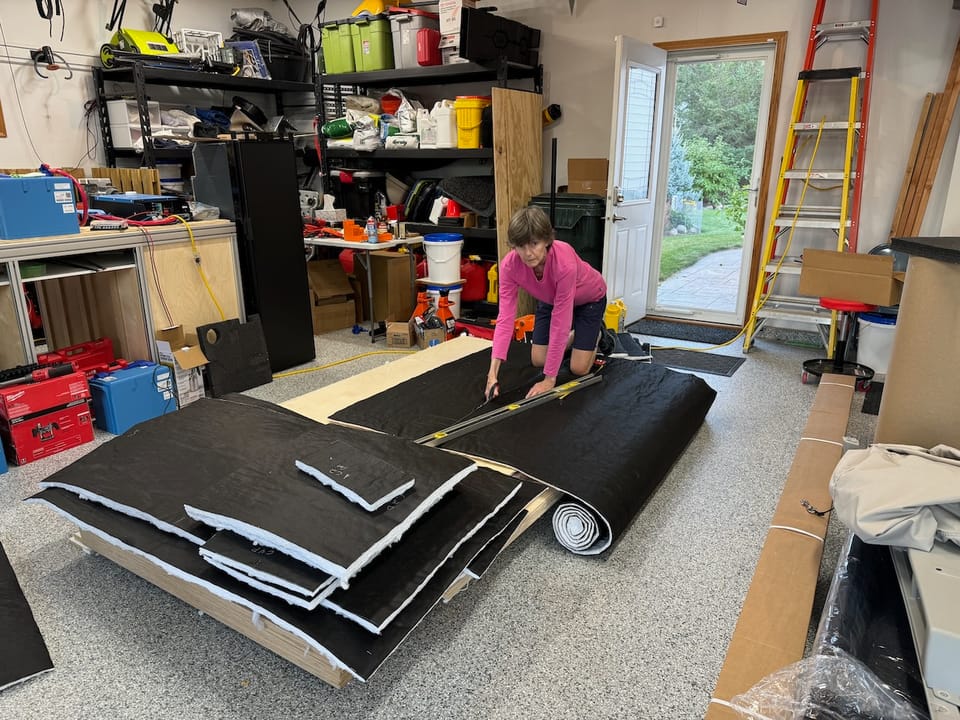
The van starts life as a very exposed metal box with little ventilation. So it gets either really, really hot inside or really, really cold. Neither extreme is that comfortable for us delicate types.
So we insulated the floor with 1" of polyiso foam. Much of the roof and walls have a lightweight thin closed cell foam + aluminum foil material to counter thermal radiation and condensation. And finally all of the walls and ceiling have 2 layers of thinsulate. It's white on one side and black on the other - and that's what you're seeing in all the wall cavities.
Mary Jo measured and exhaustively cut 60+ panels of thinsulate to fit all the spots. Even coming up with a labeling system for all of them and which layer they were was challenging.
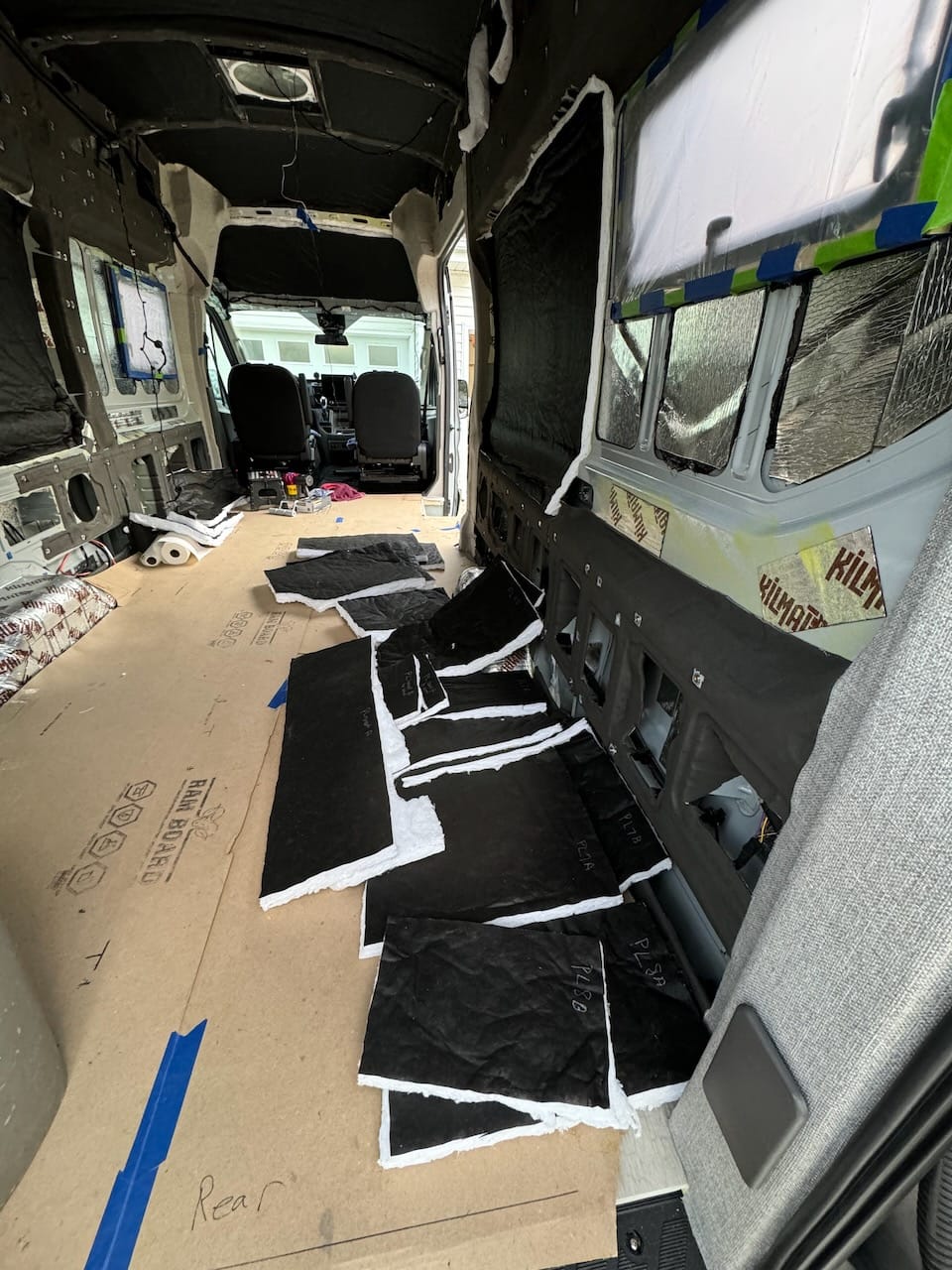
Installing all of the thinsulate was days of using the air compressor with the harbor freight spray gun and special DAP Weldwood High Heat Resistant contact cement. All in full respirators so not the most comfortable. Bit of a race to get this done in late Fall as the contact cement requires 65F+ ambient temp and needs lots of venting.
The "8020" aluminum extrusion cabinetry can also be an issue when bolted securely to the van wall metal. It's basically a giant heat/cold sink so you need to devise 'thermal breaks' to prevent that.
We used two methods:
- Crafted 'washers' out of FR4 rod because it has very high compressive strength and low thermal transfer. Many use nylon washers, but they don't hold up well at all under sustained compression loads (will loosen up).
- Encased any van metal that couldn't take thinsulate with 1/8" thick neoprene to prevent thermal radiation of heat/cold. Having to tape over ~100+ rivnuts and then later cut them out of the neoprene is another fun task.
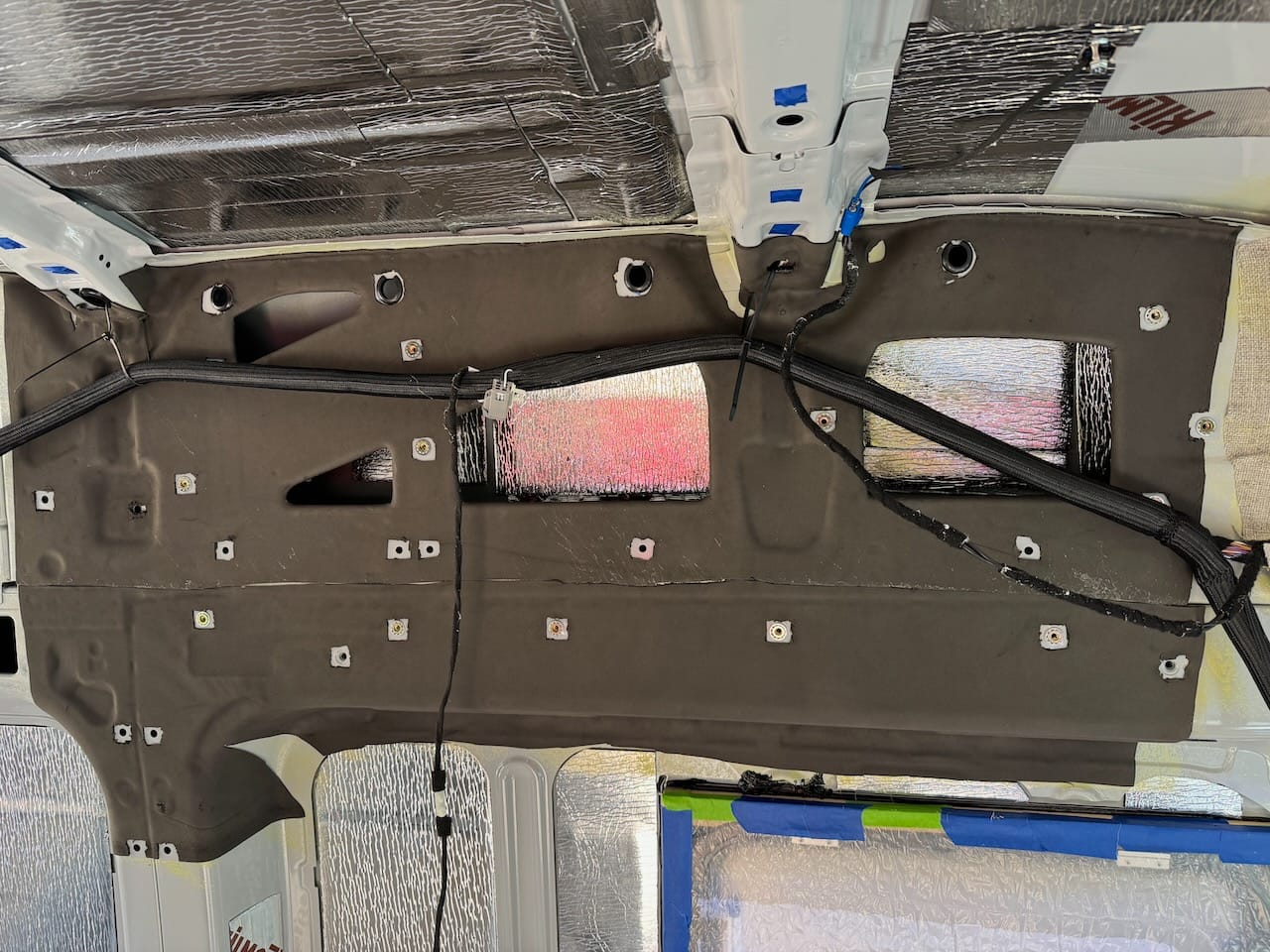
The doors also need insulation so we removed all the paneling and put thinsulate inside most of the cavities, but avoided areas near door handles or locks that always weep water in all vehicles.
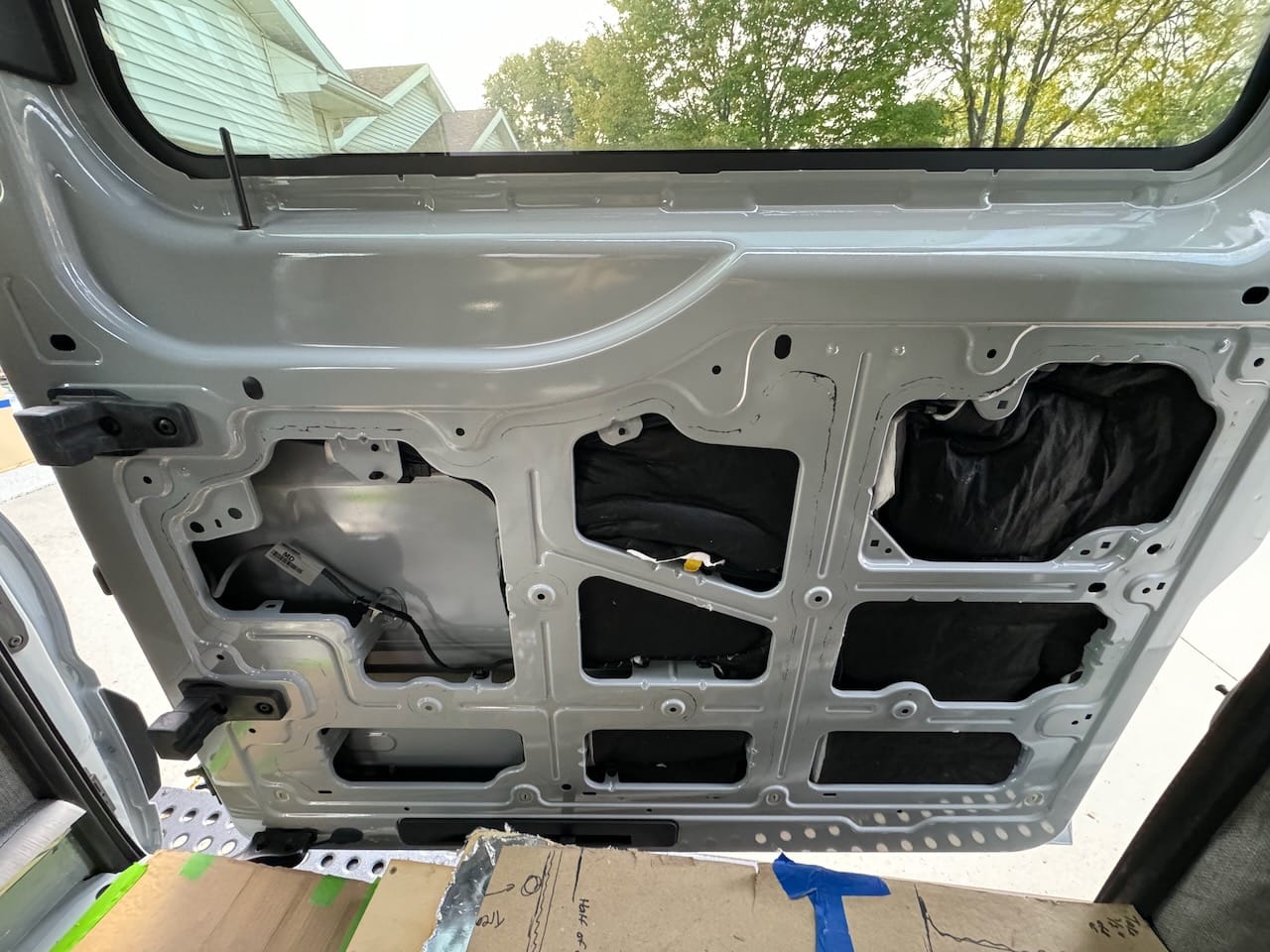
Restoring the factory moisture barrier in the passenger sliding door.
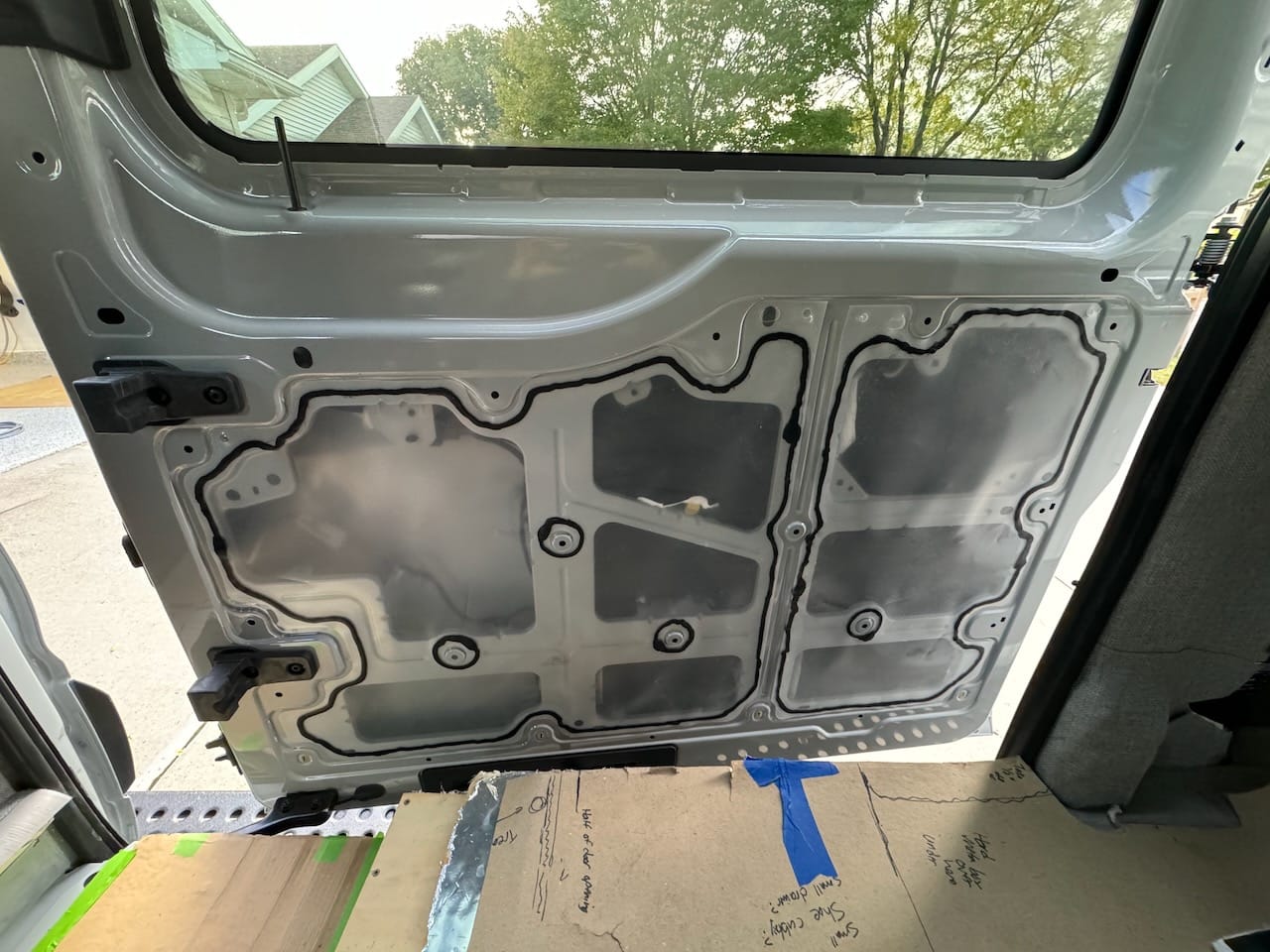
And finally used landau foam and upholstered the panel for a proper finished look.
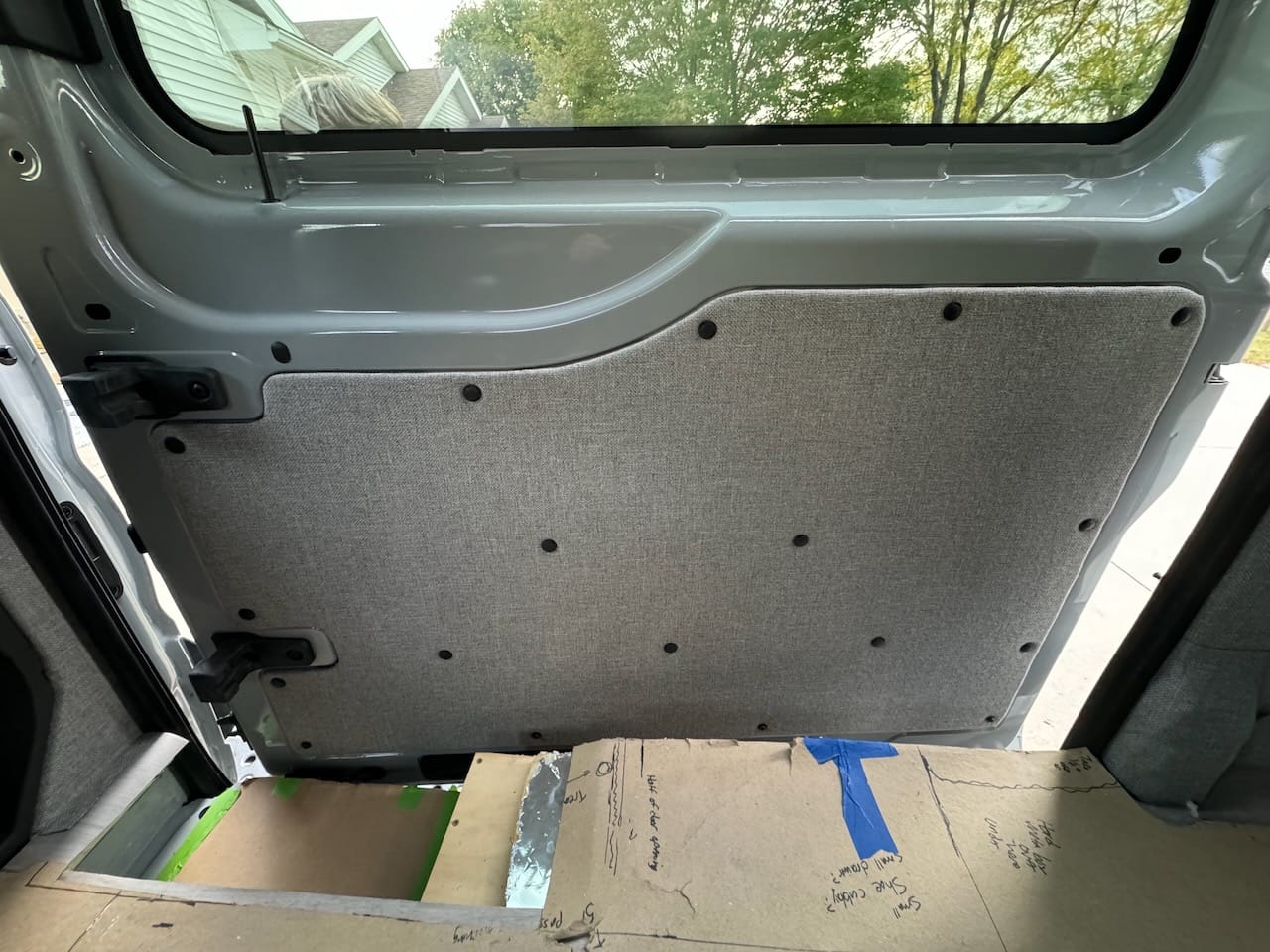
Member discussion